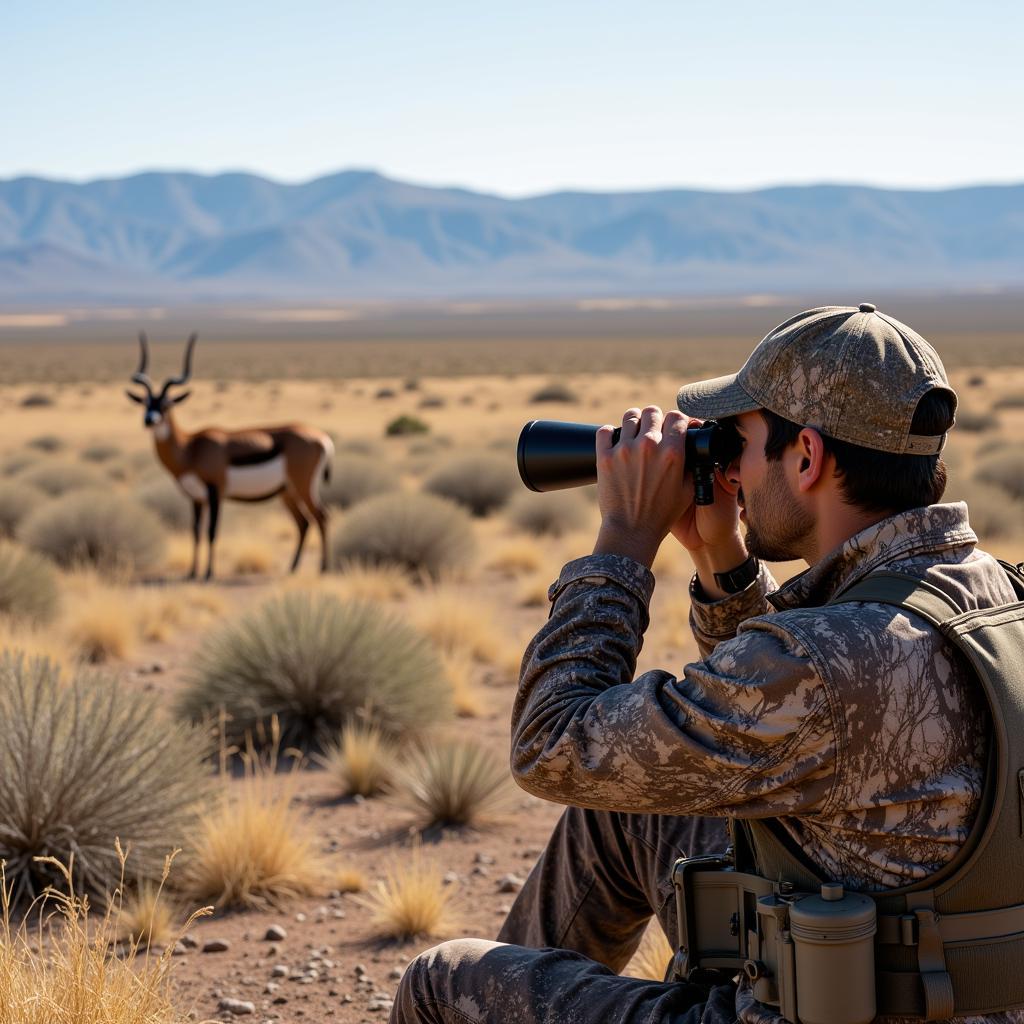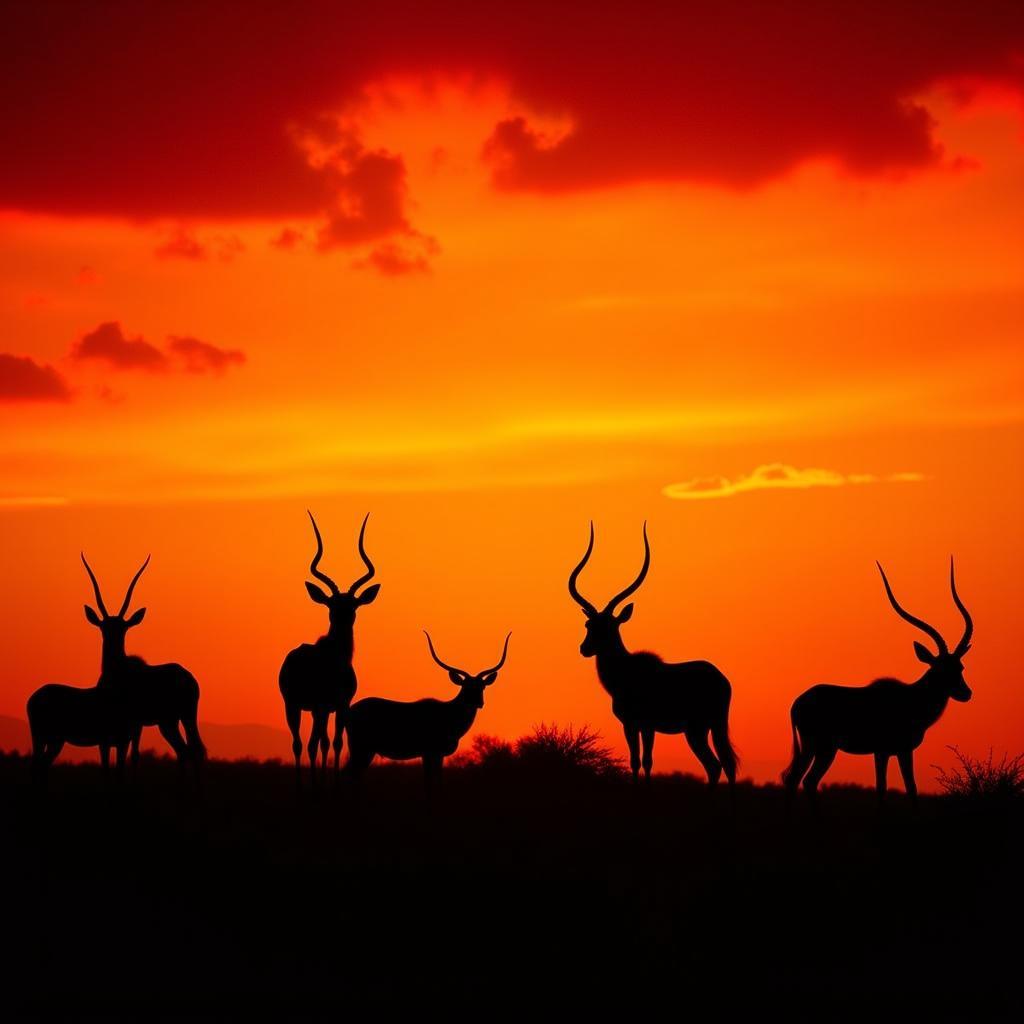African Deer in New Mexico: A Surprising Tale
African Deer In New Mexico might sound like an unlikely pairing, but the presence of exotic wildlife in the Land of Enchantment is a fascinating story. These animals, primarily various species of oryx, aren’t technically deer but antelopes, and their introduction to the American Southwest has sparked both excitement and controversy.
Oryx: The “African Deer” of New Mexico
So, why the confusion about “African deer”? Oryx, with their long, straight horns and desert-adapted physiology, resemble deer in some ways to the untrained eye. This has led to the colloquial misnomer. However, these majestic creatures are true antelopes, hailing from the arid landscapes of Africa. Their introduction to New Mexico wasn’t accidental; it was a deliberate effort to diversify hunting opportunities and manage vegetation.
The Introduction of Oryx to New Mexico
In the mid-20th century, the New Mexico Department of Game and Fish, along with private landowners, introduced several species of oryx, including gemsbok, scimitar-horned oryx, and Arabian oryx, to the state. The rationale behind this introduction was multifaceted. These animals were seen as a potential source of revenue through hunting permits, and their grazing habits were thought to be beneficial in controlling certain plant species.
The oryx adapted surprisingly well to the New Mexican environment, thriving in the arid grasslands and deserts. Their ability to conserve water and tolerate extreme temperatures made them a perfect fit for the challenging climate.
The Impact of Oryx on the New Mexican Ecosystem
The introduction of oryx has had both positive and negative consequences. While they have provided unique hunting opportunities and potentially contributed to vegetation management, they have also raised concerns about competition with native species and potential impacts on delicate desert ecosystems. Ongoing research continues to assess the long-term effects of oryx presence on the environment and biodiversity of New Mexico.
One crucial aspect of understanding the oryx’s role in the New Mexican ecosystem is their diet. They primarily graze on grasses and shrubs, and their impact on native plant communities remains a topic of ongoing study.
Hunting Oryx in New Mexico
Hunting oryx in New Mexico has become a popular activity, attracting hunters from across the country. The challenging terrain and the unique opportunity to pursue these magnificent animals offer a thrilling experience. Strict regulations and permit systems are in place to ensure sustainable hunting practices and maintain healthy oryx populations.
 Hunter Glassing for Oryx in New Mexico
Hunter Glassing for Oryx in New Mexico
Oryx Conservation Efforts
Despite the hunting pressures, conservation efforts are crucial for maintaining stable oryx populations. These initiatives include habitat preservation, population monitoring, and research aimed at understanding the complex interactions between oryx and the New Mexican environment.
“Managing exotic species like oryx requires a delicate balance,” explains Dr. Anya Sharma, a wildlife biologist specializing in desert ecosystems. “We need to ensure sustainable hunting practices while also mitigating potential negative impacts on the native flora and fauna.”
The Future of African Deer (Oryx) in New Mexico
The future of oryx in New Mexico depends on continued research, adaptive management strategies, and ongoing dialogue between stakeholders, including hunters, conservationists, and landowners. Balancing the economic benefits of hunting with the ecological integrity of the landscape remains a central challenge.
“The oryx story in New Mexico is a testament to the complex interplay between human intervention and natural processes,” adds Dr. Sharma. “It highlights the importance of careful consideration and ongoing monitoring when introducing non-native species.”
 Oryx Herd in New Mexico at Sunset
Oryx Herd in New Mexico at Sunset
In conclusion, the “African deer” of New Mexico, the oryx, have become an integral part of the state’s unique wildlife tapestry. While their introduction has presented both opportunities and challenges, ongoing management and conservation efforts are essential to ensuring their long-term sustainability and the health of the New Mexican ecosystem.
FAQ
- Are oryx actually deer? No, oryx are antelopes.
- Why were oryx introduced to New Mexico? For hunting and vegetation management.
- Is oryx hunting legal in New Mexico? Yes, with proper permits.
- What do oryx eat? Primarily grasses and shrubs.
- What are the conservation concerns regarding oryx? Competition with native species and ecosystem impact.
- Are there different types of oryx in New Mexico? Yes, including gemsbok, scimitar-horned oryx, and Arabian oryx.
- What is being done to manage the oryx population? Ongoing research, population monitoring, and regulated hunting.
Other Questions and Resources
- What is the impact of climate change on oryx populations in New Mexico?
- How do oryx interact with other large herbivores in the region?
- Explore our other articles on New Mexican wildlife and conservation efforts.
Need more information? Contact us at +255768904061, email [email protected], or visit us in Mbarali DC Mawindi, Kangaga, Tanzania. Our customer service team is available 24/7.


